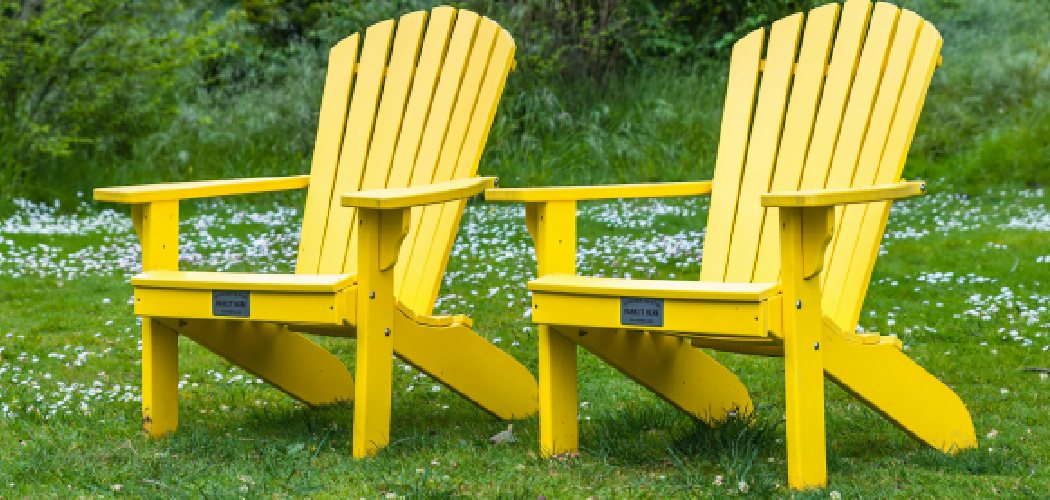Wooden lawn chairs embody a timeless aesthetic that seamlessly blends with outdoor environments, offering both durability and comfort for relaxing in your yard, garden, or patio. Their natural materials and classic design make them popular for enhancing any outdoor setting. Building your own wooden lawn chairs can be rewarding, providing several advantages beyond their visual appeal.
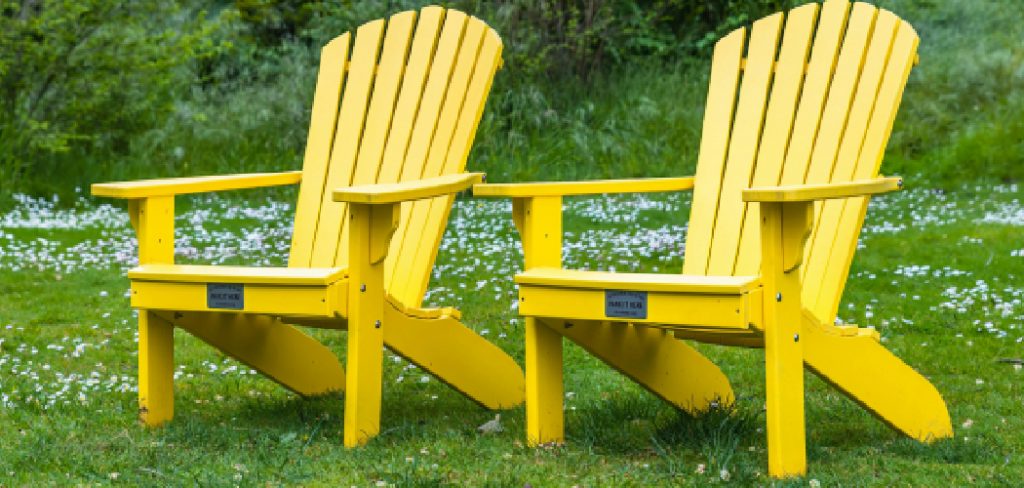
Crafting your own chairs can significantly reduce costs compared to purchasing pre-made furniture while also allowing for customization to match your specific preferences in size, style, and finish. Additionally, building fosters a sense of accomplishment and an appreciation for craftsmanship. This article will guide you through how to make Wooden Lawn Chairs, offering a clear, step-by-step process to create sturdy and stylish seating that you can enjoy for years to come. Whether you’re a seasoned woodworker or a beginner, this guide is designed for all skill levels.
Choosing the Right Wood for Lawn Chairs
Selecting the right type of wood is a crucial first step in crafting sturdy and long-lasting lawn chairs. The best options for outdoor furniture are those that can withstand weather exposure and resist insects and decay.
Best Types of Wood for Outdoor Furniture
- Cedar: Lightweight and naturally resistant to weather and insects, cedar is an excellent choice for outdoor use due to its durability and pleasant aroma.
- Teak: Known for its exceptional durability, teak contains natural oils that protect it from rotting, making it one of the most reliable woods for outdoor furniture.
- Redwood: This strong and decay-resistant wood is perfect for outdoor applications, offering a combination of stability and aesthetic appeal.
- Pine (Pressure-Treated): A more affordable option, pressure-treated pine requires sealing to enhance its resistance to moisture and weather conditions.
Wood Thickness and Durability Considerations
To ensure the stability and comfort of your lawn chairs, it is advisable to use wood that is at least 1 inch thick for key components like the seat and backrest. Thicker pieces may be used to enhance durability for load-bearing elements such as legs and armrests.
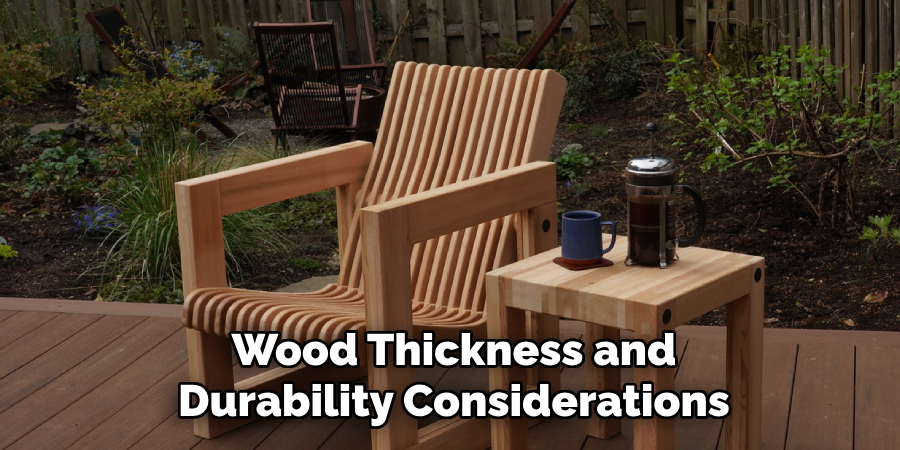
Prepping the Wood
Proper preparation is essential to ensuring the longevity of your wooden lawn chairs. Sand all surfaces to remove rough edges and splinters, making the chairs safe and comfortable to use. Sealing the wood with a weather-resistant finish or stain helps to protect it against moisture and UV rays. Additionally, consider pre-treating the wood to prevent any potential decay over time.
Tools and Materials Needed
Essential Tools
- Saw (Circular Saw or Jigsaw): Used for cutting the wood pieces to the correct dimensions.
- Drill with Wood Bits: Necessary for creating holes and assembling the chair.
- Sander: Smooths edges and surfaces, making the chair more comfortable and ready for finishing.
- Clamps: Helpful for holding pieces together securely during assembly or when applying wood glue.
- Measuring Tape, Pencil, and Square: Ensures precise measurements and accurate cuts.
Additional Materials
- Screws or Nails: Serve as the primary components for holding the chair together.
- Wood Glue: Adds extra strength and stability to the assembled pieces.
- Outdoor Wood Sealant or Stain: Protects the wood from moisture and weather exposure, enhancing its longevity.
- Optional: Cushions for the seat and backrest, providing additional comfort and a decorative touch.
Having these tools and materials ready beforehand will streamline the building process, allowing for efficient and high-quality construction of your wooden lawn chairs.
Cutting and Preparing Chair Parts
Measuring and Cutting the Frame Pieces
Before starting, it’s important to measure and mark all the required parts of the chair based on the desired dimensions. Standard lawn chair dimensions typically include a seat height of 16-18 inches, a width of around 20-24 inches, and a depth of approximately 18-20 inches.
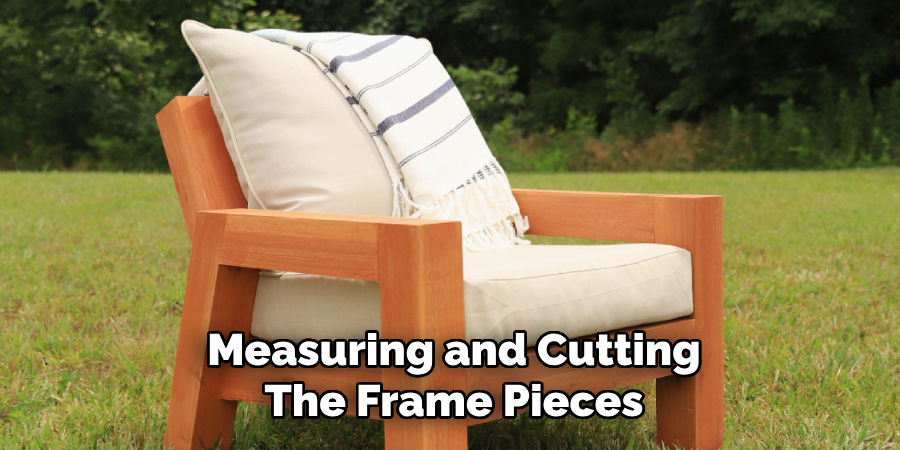
Begin by cutting the legs, ensuring they are sturdy and equal in length for proper balance. Next, cut the seat supports, which will serve as the base for the slats. For the backrest, measure and cut evenly spaced slats that provide comfort and support. Finally, cut the armrests to size, ensuring they are wide enough to rest arms comfortably.
Shaping the Armrests and Backrest
To enhance comfort and add a professional touch to the chair, consider rounding or curving the edges of the armrests and backrest slats. Using a jigsaw or router, smooth out sharp corners and create a gently curved shape. This improves aesthetics and ensures the chair is safe and comfortable to use.
Pre-Sanding and Drilling Pilot Holes
Before assembling the chair and all the individual pieces thoroughly to eliminate rough edges or splinters, use fine-grit sandpaper to achieve a smooth finish. Additionally, to prevent the wood from splitting during assembly, drill pilot holes where screws or nails will be inserted. This step is crucial for ensuring durability and a polished final product. By preparing the pieces properly, you’ll set the foundation for a well-crafted lawn chair.
How to Make Wooden Lawn Chairs: Assembling the Wooden Lawn Chair
Step 1: Building the Chair Frame
Begin by attaching the legs to the seat supports using screws and wood glue. Ensure that the legs are correctly aligned and the frame is level to provide a stable base for the chair. Use clamps to hold the pieces together while the glue dries for added strength. Once secured, double-check for sturdiness, as this frame will serve as the chair’s foundation.
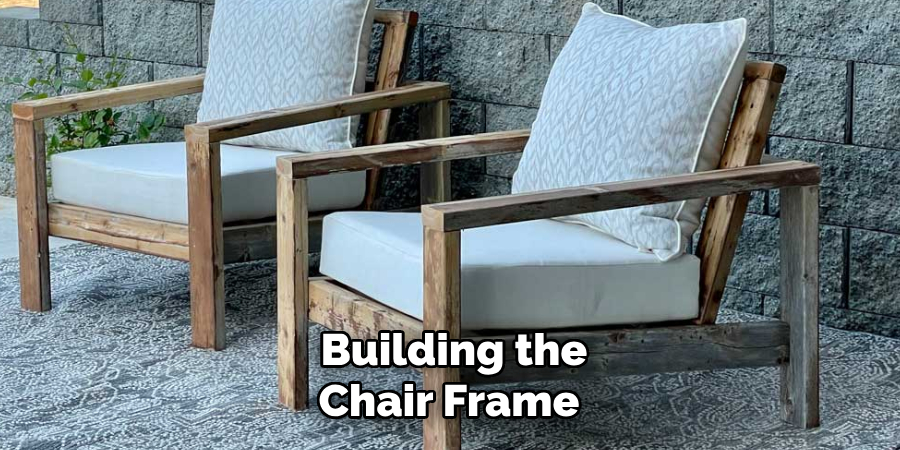
Step 2: Attaching the Seat Slats
Next, space the seat slats evenly across the seat frame, leaving small gaps between each to allow for comfort and breathability. Use screws to secure each slat to the frame, ensuring they are fastened tightly but without causing any splitting of the wood. Once all slats are secured, inspect the seat for any unevenness, making adjustments as needed to maintain stability.
Step 3: Installing the Backrest
Position the backrest slats at a slight angle to provide ergonomic support for the user. This slight incline enhances the chair’s comfort. Attach the slats to the rear support frame, making sure they are spaced evenly and securely fastened with screws. Check that the angle and alignment are consistent to create a uniform and appealing backrest.
Step 4: Adding the Armrests
The final step is securely attaching the armrests to the front legs and backrest supports. Use screws and wood glue to anchor them firmly. Ensure the armrests are level and extend far enough to provide comfortable support. Once attached, sand down any rough edges to create a smooth, splinter-free surface for added comfort. With all components assembled and secure, your wooden lawn chair is now complete and ready for use.
Finishing and Sealing the Chair
Sanding and Smoothing Edges
Use fine-grit sandpaper to eliminate any rough spots or sharp edges to ensure a flawless and comfortable finish. Focus on areas where pieces are joined or where screws have been installed to prevent any potential splinters—sand toward the wood grain to maintain a smooth and polished appearance. After sanding, wipe down the chair with a damp cloth to remove all dust and debris.
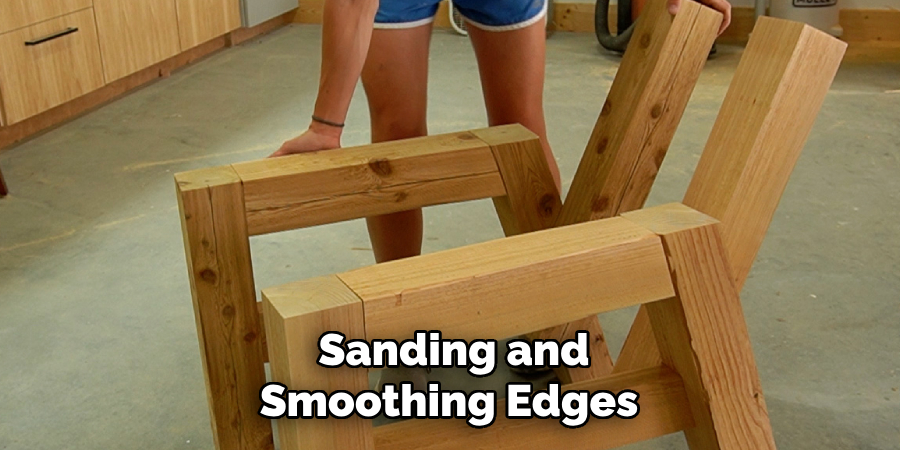
Applying Wood Stain or Paint
Choose a wood stain or outdoor paint that enhances the natural beauty of the wood and complements the chair’s surroundings. A high-quality stain will highlight the wood grain, while paint offers vibrant color choices. Apply the stain or paint in even strokes, letting it dry completely between each coat. Applying multiple coats is recommended to achieve an even finish and to improve the chair’s durability. Follow the product’s drying and curing guidelines for optimal results.
Sealing for Weather Resistance
Complete the finishing process by applying a waterproof sealant. This step is critical for protecting the chair from weather-related damage caused by rain, sun, and humidity. Use a brush or spray to apply the sealant evenly across the entire chair. Allow adequate drying time, and reapply the sealant as the product instructions recommend to extend the chair’s lifespan. Regular maintenance will keep your chair looking beautiful and functional for years to come.
Customization Options
Adding a Reclining Feature
A reclining feature can significantly enhance the comfort of your chair. To add this functionality, consider installing an adjustable backrest mechanism. Hinges or pivot points can be incorporated into the chair’s design, allowing the backrest to be tilted at various angles. Ensure the mechanism is sturdy and easy to operate, providing a smooth transition between upright and reclined positions. This feature is ideal for relaxing during long afternoons outdoors.
Building a Matching Footrest
A matching footrest can elevate the comfort and aesthetic appeal of your setup. Construct a simple footrest using the same type of wood as the chair to maintain a cohesive design. Cut pieces to form a rectangular base, then add slats for support. To enhance portability, consider making the footrest lightweight or adding handles. Stain or paint it to complement the chair’s finish for a unified look.
Painting vs. Staining for Different Looks
Deciding between painting and staining is key when customizing your chair’s appearance. Staining enhances the natural wood grain for a rustic or classic appeal, ideal for a natural look. On the other hand, painting provides a bold, colorful finish and greater versatility in matching your outdoor décor. Opt for weather-resistant products to ensure the chosen look lasts despite outdoor conditions.
Adding Cushions or Upholstery
Weather-resistant cushions or upholstery can add luxury and functionality to your chair. Select cushions made with durable, UV-resistant, and waterproof fabrics to withstand outdoor exposure. Choose colors and patterns that complement the chair and surrounding space. Alternatively, for a more integrated approach, add light upholstery to the chair itself, attaching it securely while ensuring easy removal for cleaning.
Common Mistakes to Avoid
Incorrect Measurements
One of the most common mistakes is failing to measure accurately before cutting. Double-check all dimensions to ensure precise cuts and prevent material waste. Measuring twice and cutting once can save both time and resources.
Using the Wrong Screws or Nails
Selecting the right hardware is critical for durability. Always opt for rust-resistant screws or nails, especially for outdoor chairs, to prevent corrosion and maintain the chair’s structural integrity over time.
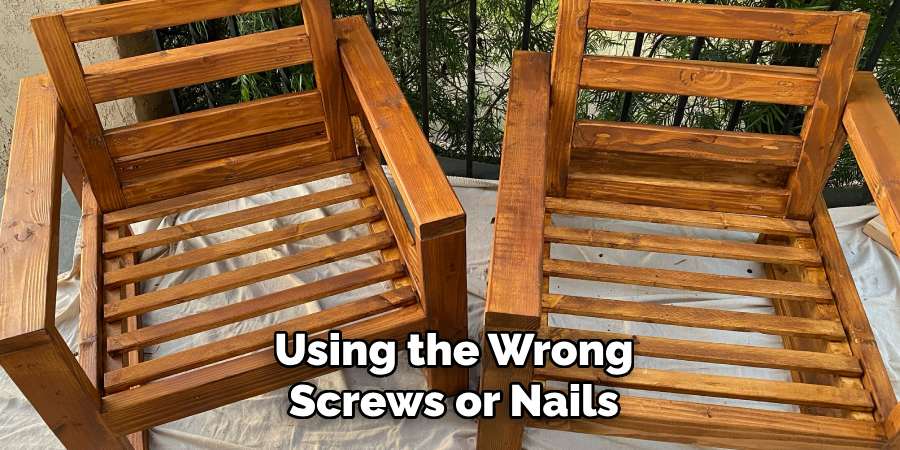
Skipping Wood Sealing
For outdoor furniture, sealing the wood is non-negotiable. Wood is vulnerable to moisture without proper sealing, leading to rot, warping, and overall deterioration. Always apply a high-quality outdoor wood sealant to protect against the elements.
Not Checking Chair Stability
Chair stability is essential for safety and comfort. Before finishing your project, thoroughly check that all joints are tight and the chair does not wobble. Reinforce any weak areas to ensure long-lasting sturdiness.
Conclusion
Building a durable and stylish wooden lawn chair requires careful attention to detail and adherence to key steps. From accurate measurements to selecting the right screws and sealing the wood, each stage impacts the chair’s longevity and appearance. Experimenting with different wood types and designs can add a personal touch and enhance your creativity in learning how to make Wooden Lawn Chairs. To keep your chair in prime condition, practice regular cleaning, reseal it periodically, and store it properly during extreme weather conditions. Enjoy the satisfaction and pride of creating your own comfortable outdoor furniture that combines functionality and craftsmanship.

